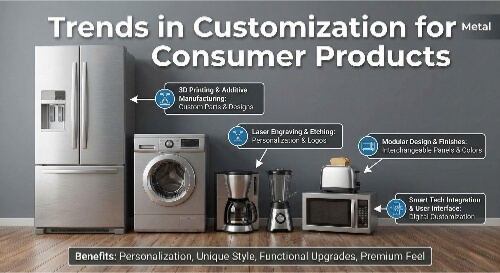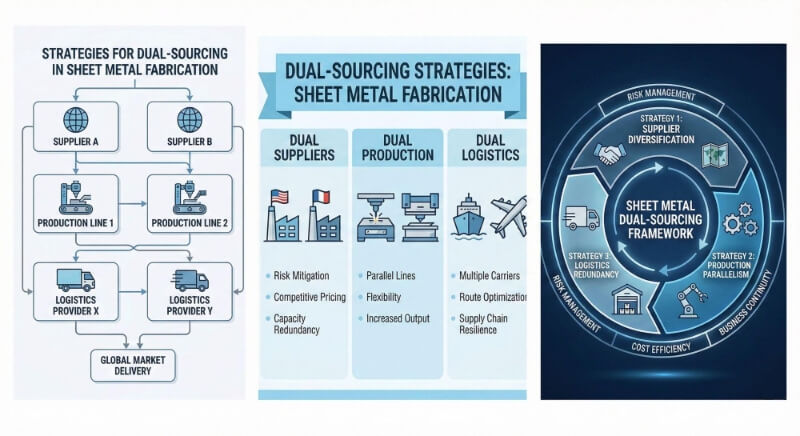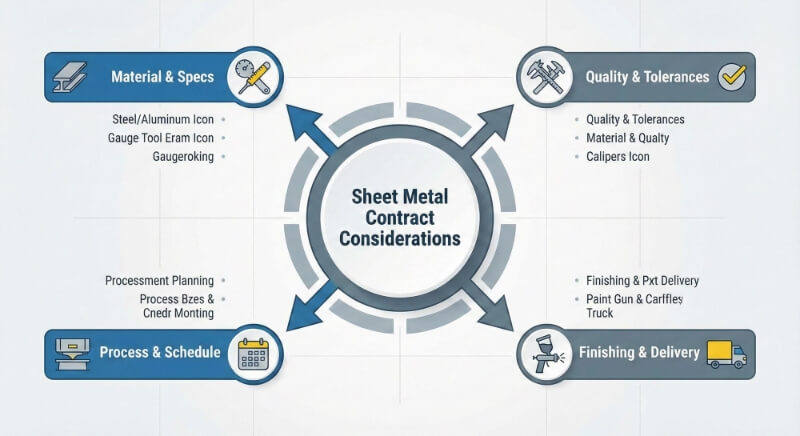Muitos fabricantes e engenheiros precisam de novas formas de unir peças. Os métodos tradicionais, como a soldadura e os parafusos, podem causar problemas como o aumento de peso ou danos nos materiais. A ligação adesiva está a mudar a forma como as pessoas ligam diferentes peças. Pode resolver estes problemas, oferecendo um método mais limpo, mais rápido e mais flexível.
A colagem de adesivos oferece aos engenheiros e fabricantes de produtos novas opções. Este método pode reduzir o peso, melhorar o aspeto e ajudar a ligar materiais resistentes. Continue a ler para saber como a colagem de adesivos pode ajudar os seus projectos.
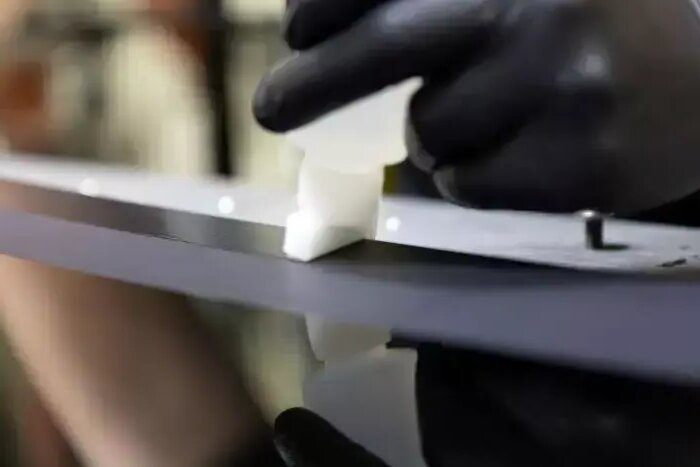
O que é a colagem de adesivos?
A colagem com adesivo é um processo de união que utiliza um material, normalmente um líquido ou uma pasta, para colar duas superfícies. O material é designado por adesivo. Espalha-se entre as peças e depois endurece para formar uma ligação forte.
Este método não altera a forma das peças. Funciona bem para materiais finos ou para aqueles que não suportam calor ou pressão. A ligação espalha a tensão uniformemente pela superfície, o que pode melhorar a resistência e o aspeto.
Os princípios básicos da colagem de adesivos
Para compreender porque é que a colagem de adesivos funciona, é importante ver como é que o adesivo adere às superfícies. Existem algumas formas diferentes de o fazer, dependendo dos materiais e do método de colagem.
Adesão mecânica
A adesão mecânica acontece quando a cola flui para pequenos orifícios ou áreas rugosas da superfície. À medida que endurece, fixa-se nesses pequenos espaços como uma chave numa fechadura.
Isto é comum quando se colam superfícies rugosas ou porosas. Quanto melhor o adesivo preencher as lacunas, mais forte será a ligação. A preparação da superfície, como a lixagem ou o jato de areia, pode ajudar a melhorar este efeito.
Adesão química
A adesão química forma-se quando a cola reage com as superfícies. A reação cria novas ligações químicas no ponto de união.
Isto funciona melhor quando a cola e o material são quimicamente compatíveis. Algumas colas são concebidas para se adaptarem a materiais específicos, como metal, plástico ou vidro.
Este tipo de aderência é muito forte. É frequentemente utilizado em colagens estruturais onde a resistência é mais importante.
Difusão Adesão
A adesão por difusão ocorre quando as moléculas do adesivo e da superfície se movem uma para a outra. Misturam-se ligeiramente no ponto em que se tocam.
Isto funciona normalmente com plásticos ou materiais semelhantes - tanto a superfície como o adesivo têm de ser suficientemente macios para que as moléculas se possam mover.
A ligação torna-se mais forte à medida que os materiais se misturam. Com o tempo, a ligação torna-se mais parecida com uma peça única do que com duas partes separadas.
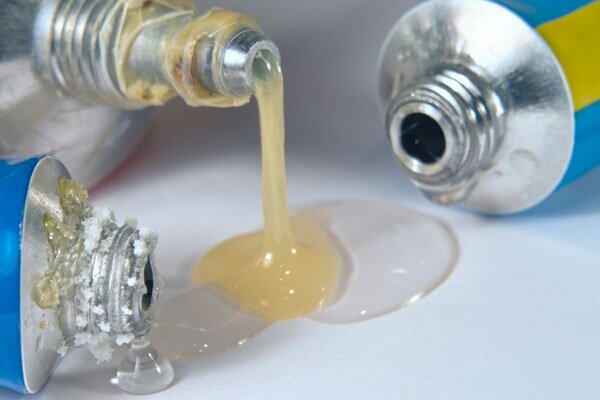
O processo de colagem passo a passo
Obter uma colagem adesiva correta significa seguir cuidadosamente cada passo. Se falhar um, a colagem pode falhar. Eis como fazê-lo corretamente.
Etapa 1: Preparação da superfície
A superfície de colagem deve estar limpa e pronta. O pó, o óleo, a ferrugem ou a humidade podem enfraquecer a ligação. Comece por limpar com solventes ou água e sabão.
Para uma melhor aderência, tornar a superfície áspera utilizando lixamento, jato de areia ou tratamento químico. Isto ajuda a cola a aderir mais firmemente, aumentando a área da superfície.
Passo 2: Seleção do adesivo
Escolha o adesivo correto para o trabalho. Pense nos materiais que está a colar, na força que a junta precisa de ter e no ambiente que irá enfrentar, como calor, frio ou humidade.
Algumas colas funcionam melhor com plásticos, enquanto outras são feitas para metal ou vidro. Verifique sempre a ficha de dados do produto ou faça um pequeno teste antes de o utilizar totalmente.
Etapa 3: Aplicação do adesivo
Aplique o adesivo uniformemente sobre a superfície. Pode utilizar um pincel, um rolo, um frasco de espremer, um spray ou um doseador, consoante o tipo e a quantidade necessários.
Demasiada cola pode causar transbordamento. Demasiado pouco pode deixar lacunas. Tente criar uma camada fina e uniforme que cubra completamente a área de colagem.
Passo 4: Unir as superfícies
Junte as duas partes enquanto a cola ainda pode ser trabalhada. Alinhe-as cuidadosamente. Qualquer desalinhamento pode afetar a resistência e o aspeto da colagem.
Aplique uma ligeira pressão para manter as peças no sítio. Isto ajuda a espalhar o adesivo e a remover o ar retido.
Etapa 5: Cura
A cura é quando o adesivo endurece e forma uma ligação. Isto pode levar de minutos a horas, dependendo do tipo de adesivo e da temperatura.
Alguns adesivos curam à temperatura ambiente. Outras necessitam de calor, luz ou humidade. Não mova as peças durante este período, ou poderá enfraquecer a junta.
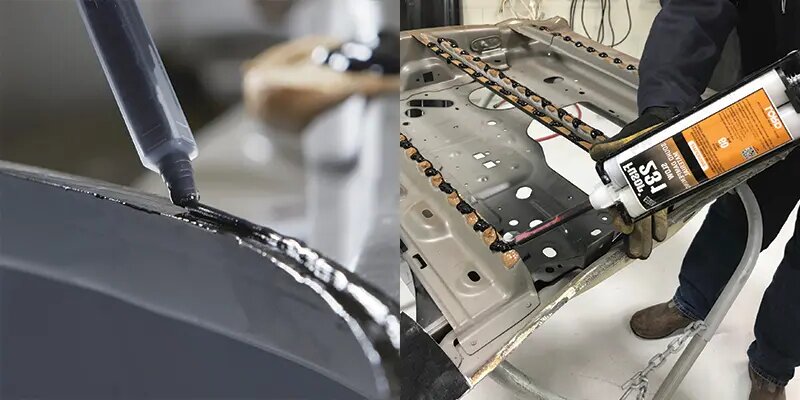
Vantagens da colagem adesiva
A colagem com adesivo oferece vantagens que outros métodos de união não conseguem igualar. Apoia tanto a função como o design, especialmente em produtos modernos feitos de materiais mistos.
Distribuição uniforme de tensões
As colas distribuem a tensão por uma vasta área e não apenas em alguns pontos. Isto ajuda a reduzir os pontos fracos e evita a formação de fissuras. A carga é partilhada de forma mais uniforme, o que pode melhorar a resistência e a durabilidade a longo prazo.
União de materiais leves
Muitos adesivos são muito mais leves do que os parafusos, as cavilhas ou os soldaduras. Isto é útil em indústrias como a automóvel ou a aeroespacial, onde a redução do peso é importante. As colas também permitem unir materiais finos sem adicionar peso extra ou fazer furos.
Flexibilidade e estética do design
Os adesivos permitem desenhos mais suaves e mais limpos. Não precisa de furos, fixadoresou marcas de soldadura. Isto ajuda a criar produtos elegantes sem costuras visíveis. Também facilita a colagem de superfícies curvas, irregulares ou de difícil acesso.
Limitações e desafios
Embora a colagem com adesivo ofereça muitas vantagens, não é perfeita. Alguns limites podem afetar o facto de ser ou não o método adequado para a sua aplicação.
Capacidade de carga
As colas podem não suportar cargas elevadas tão bem como a soldadura ou os fixadores mecânicos. Em utilizações intensivas, as juntas coladas podem falhar se forem sobrecarregadas ou apoiadas de forma incorrecta. Por razões de segurança, muitos projectos utilizam a ligação adesiva juntamente com rebites ou parafusos.
Resistência ambiental
Algumas colas não resistem bem ao calor, ao frio ou à humidade. A exposição à luz solar, a produtos químicos ou às condições climatéricas pode quebrar a ligação. Existem colas especiais feitas para ambientes agressivos, mas podem custar mais ou necessitar de passos adicionais durante a colagem.
Durabilidade a longo prazo e envelhecimento
Com o tempo, as colas podem secar, encolher ou perder força. O calor e a luz UV aceleram este processo. É necessária uma inspeção regular das peças coladas que são utilizadas a longo prazo. A utilização da cola certa e a sua cura correta ajudam a melhorar a resistência ao envelhecimento.
Factores que afectam a resistência da ligação
Uma ligação adesiva forte depende de muitos pequenos pormenores. Se alguma parte do processo não estiver correta, a colagem pode falhar mais cedo do que o esperado.
Rigidez da superfície
A textura da superfície desempenha um papel importante. Uma superfície ligeiramente rugosa ajuda o adesivo a agarrar-se melhor. Se for demasiado lisa, a cola pode não aderir bem. Demasiado rugosa, e pode não se espalhar uniformemente. Uma lixagem ligeira ou um jato de areia dá frequentemente os melhores resultados.
Método de aplicação
A forma como se aplica a cola é importante. Um revestimento irregular, ar retido ou demasiada cola podem enfraquecer a ligação. A utilização da ferramenta correta - como um pincel, bocal ou rolo - ajuda a manter a camada suave e consistente.
Condições ambientais
A temperatura e a humidade afectam a forma como a cola cura. Demasiado frio ou demasiado húmido, e a cura pode abrandar ou parar completamente. Siga sempre as condições de trabalho recomendadas pelo adesivo. Armazene os materiais corretamente para evitar problemas antes mesmo de iniciar a colagem.
Compatibilidade de materiais
Nem todas as colas aderem a todos os materiais. Alguns plásticos, borrachas ou metais necessitam de tratamentos de superfície especiais ou primários. Verifique os dados técnicos da cola para se certificar de que foi feita para os seus materiais. Fazer um teste rápido pode poupar tempo e dinheiro mais tarde.
Comparação da colagem de adesivos com outros métodos de união
Eis uma comparação rápida, lado a lado, da colagem adesiva com a soldadura e os fixadores mecânicos:
| Recurso | Colagem adesiva | Soldadura | Fixadores mecânicos |
|---|---|---|---|
| Calor necessário | Não | Sim | Não |
| Impacto do peso | Baixo (leve) | Moderado a elevado | Acrescenta peso extra |
| Danos Superficiais | Nenhum | Sim (derrete ou queima material) | Sim (buracos ou deformações) |
| Aparência | Acabamento limpo e suave | Costuras visíveis | Cabeças ou parafusos visíveis |
| Distribuição de tensões | Mesmo em toda a área colada | Concentrado nas soldaduras | Concentrado nos pontos de fixação |
| Compatibilidade de materiais | Cola facilmente materiais diferentes | Frequentemente limitado a metais semelhantes | Funciona com a maioria dos materiais |
| Custo do equipamento | Baixa a moderada | Elevado (ferramentas especiais, formação) | Baixa a moderada |
| Retrabalho ou desmontagem | Difícil de desmontar de forma limpa | Muito difícil | Fácil de desmontar |
| Velocidade de aplicação | Moderado (necessita de tempo de cura) | Rápido para operadores qualificados | Rápido e fácil |
| Melhor caso de utilização | Materiais finos, mistos ou delicados | Juntas metálicas de alta resistência | Peças amovíveis ou ajustáveis |
Casos de utilização específicos do sector
A colagem de adesivos é amplamente utilizada em todos os sectores. Ajuda a satisfazer diferentes necessidades - desde a resistência e redução de peso até ao aspeto e segurança.
Automotivo e Aeroespacial
Nos automóveis e nos aviões, as colas ajudam a reduzir o peso sem perder a resistência. As peças mais leves aumentam a eficiência do combustível. As colas também unem materiais diferentes, como metal a plástico ou fibra de carbono. Reduzem o ruído e a vibração, o que melhora o conforto e o desempenho.
Eletrônicos e bens de consumo
As colas fixam componentes em telemóveis, tablets e aparelhos sem aumentar o volume. Ajudam a vedar o pó e a humidade. Também permitem designs elegantes, sem parafusos ou clips à vista no exterior.
Dispositivos médicos e embalagens
Nas ferramentas médicas, as colas reduzem a necessidade de fixadores metálicos, tornando os artigos mais leves e seguros. Nas embalagens, as colas ajudam a selar alimentos, medicamentos e produtos de cuidados pessoais de forma rápida e limpa. Também suportam designs à prova de adulteração e de abertura fácil.
Conclusão
A ligação adesiva é um processo que utiliza substâncias semelhantes a cola para unir peças sem calor ou fixadores. Funciona formando ligações fortes através da aderência à superfície, reacções químicas ou mistura molecular. Este método é limpo, suporta muitos materiais e ajuda a distribuir a tensão uniformemente pelas juntas.
Precisa de ajuda para escolher o método de ligação adequado para o seu projeto? Envie-nos os seus desenhos ou detalhes de peças-ajudamo-lo a encontrar uma solução rápida e fiável.
Olá, chamo-me Kevin Lee

Nos últimos 10 anos, tenho estado imerso em várias formas de fabrico de chapas metálicas, partilhando aqui ideias interessantes a partir das minhas experiências em diversas oficinas.
Entrar em contacto

Kevin Lee
Tenho mais de dez anos de experiência profissional no fabrico de chapas metálicas, especializando-me em corte a laser, dobragem, soldadura e técnicas de tratamento de superfícies. Como Diretor Técnico da Shengen, estou empenhado em resolver desafios complexos de fabrico e em promover a inovação e a qualidade em cada projeto.

